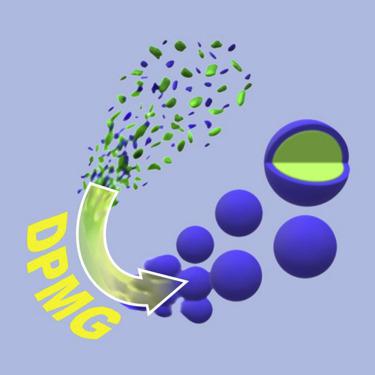Cell Reports Physical Science ( IF 7.9 ) Pub Date : 2020-05-13 , DOI: 10.1016/j.xcrp.2020.100063 M.N. Obrovac , Lituo Zheng , M.D.L. Garayt

|
Uniform ∼10-μm particles are important in several applications, including the metal oxide and graphite active materials in Li-ion batteries. Current production methods (e.g., co-precipitation and spheronization) can be wasteful and have limited composition scope. Here, we report dry particle microgranulation (DPMG) as a method for synthesizing highly engineered particles by consolidating fine, even submicron particles into particles that are tens of microns. DPMG enables the precise control of particle internal composition variation, shape, and morphology that is not possible by previous methods and at near 100% yields with no waste. Using this method, we show that Li-ion battery graphite and metal oxide particles, including those with designed internal composition variation, can be made at 100% yield with little waste. We believe that DPMG could be used in many fields to reduce the cost and environmental impact of particle synthesis and to enable the synthesis in bulk of new, highly engineered particles.
中文翻译:

通过干颗粒微粒化进行工程颗粒合成
均匀的10μm颗粒在几种应用中都很重要,包括锂离子电池中的金属氧化物和石墨活性材料。当前的生产方法(例如,共沉淀和球形化)可能是浪费的,并且组成范围有限。在这里,我们报告了干颗粒微粒化(DPMG)作为通过将细小甚至亚微米的颗粒合并为数十微米的颗粒来合成高度工程化的颗粒的方法。DPMG能够精确控制颗粒内部组成的变化,形状和形态,这是以前的方法无法实现的,并且收率接近100%,而且没有浪费。使用这种方法,我们证明锂离子电池的石墨和金属氧化物颗粒(包括具有设计内部组成变化的那些颗粒)可以100%的产率生产而几乎没有浪费。









































 京公网安备 11010802027423号
京公网安备 11010802027423号